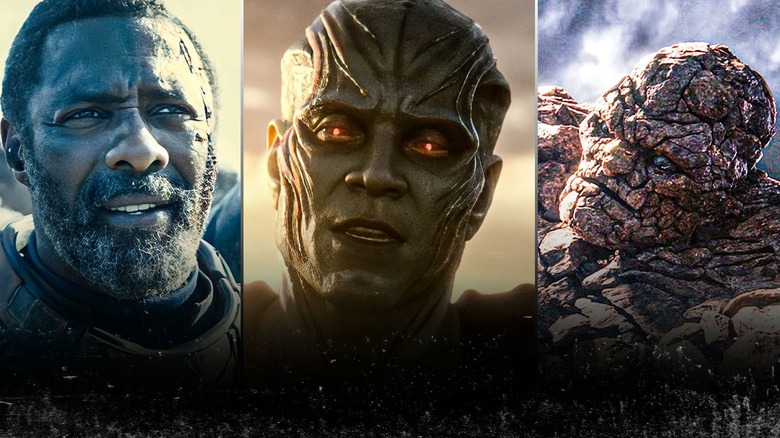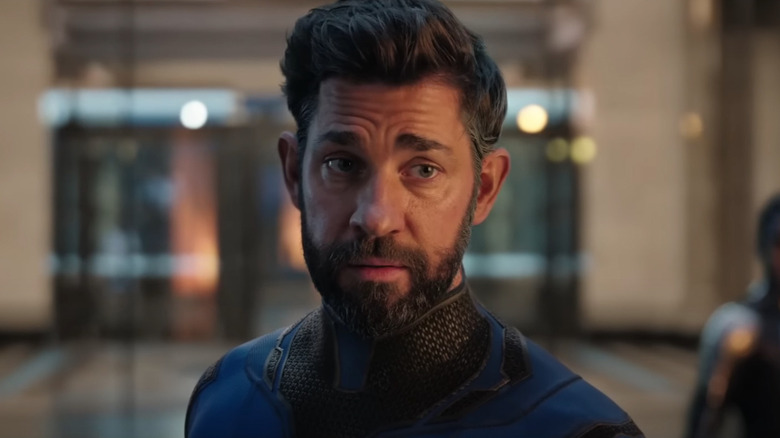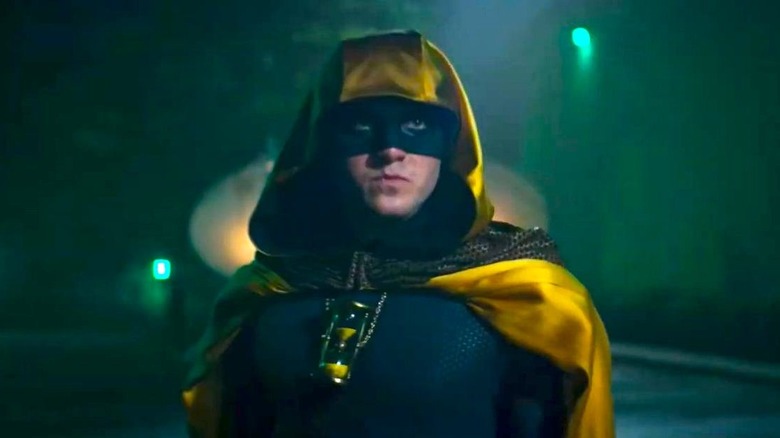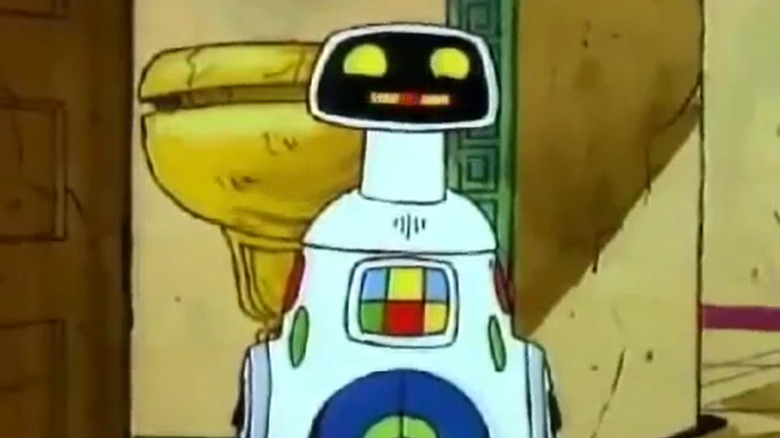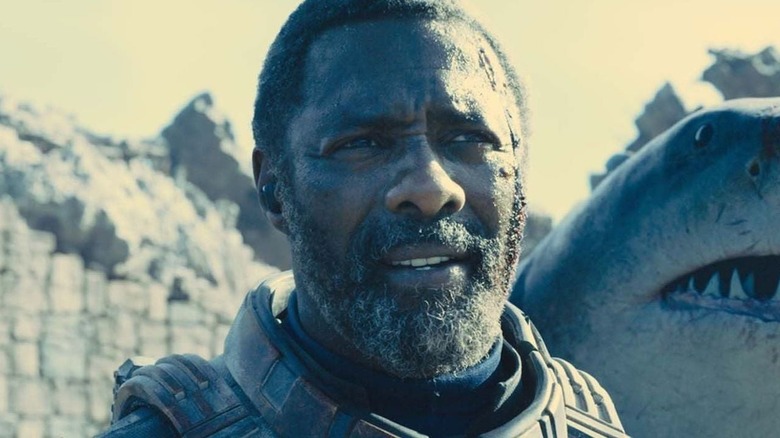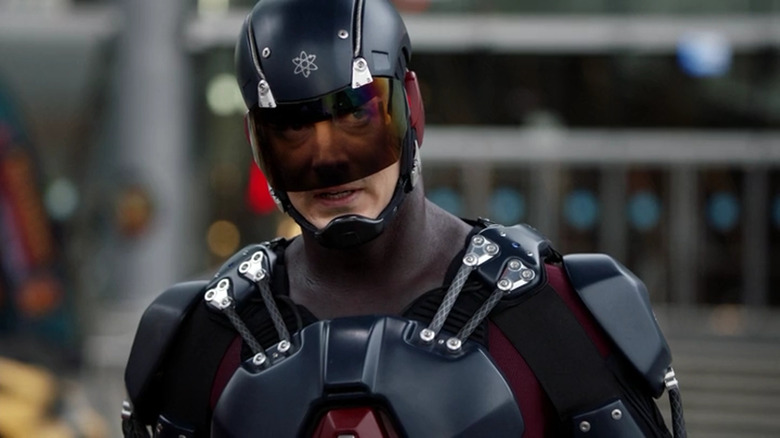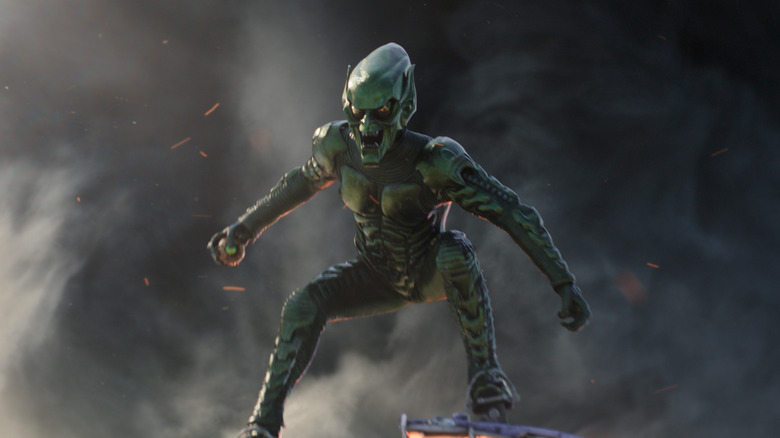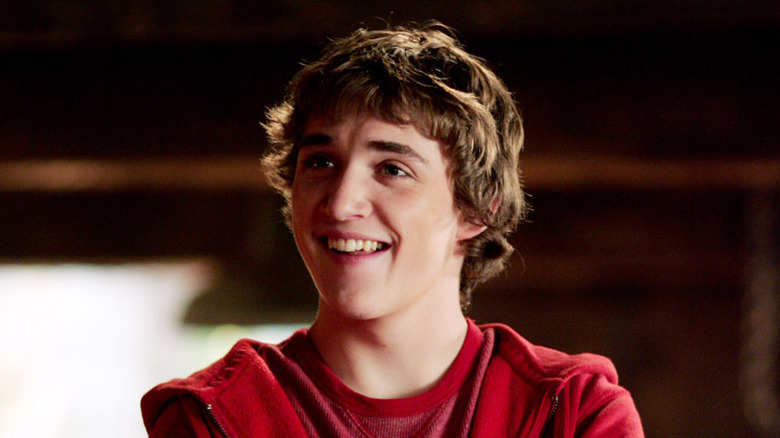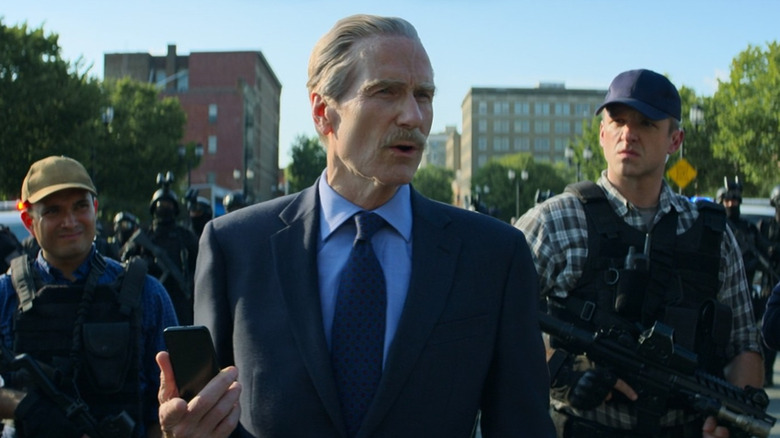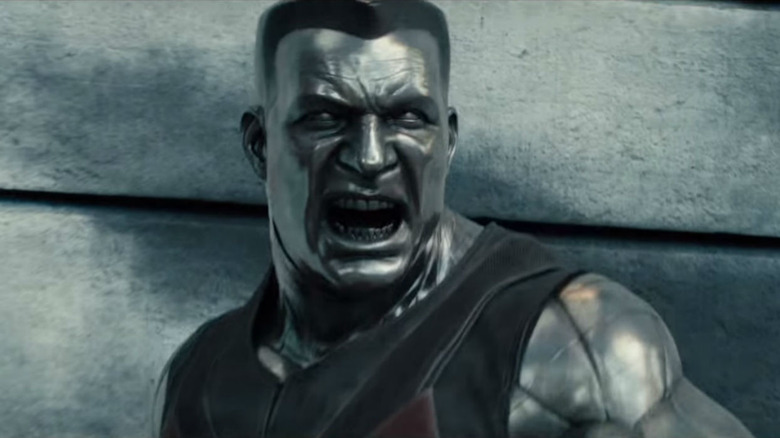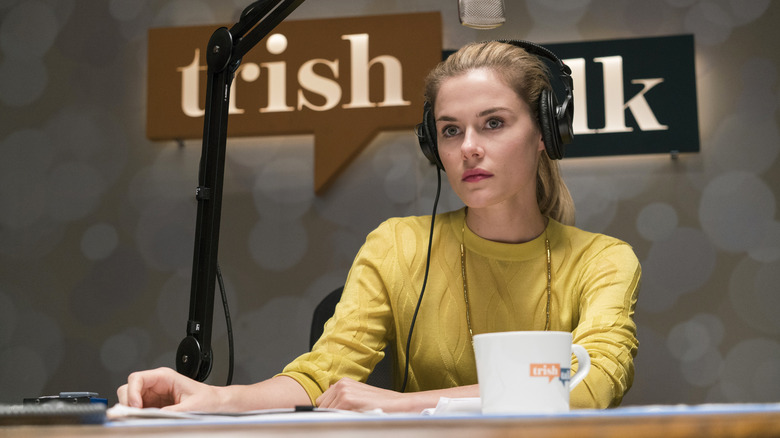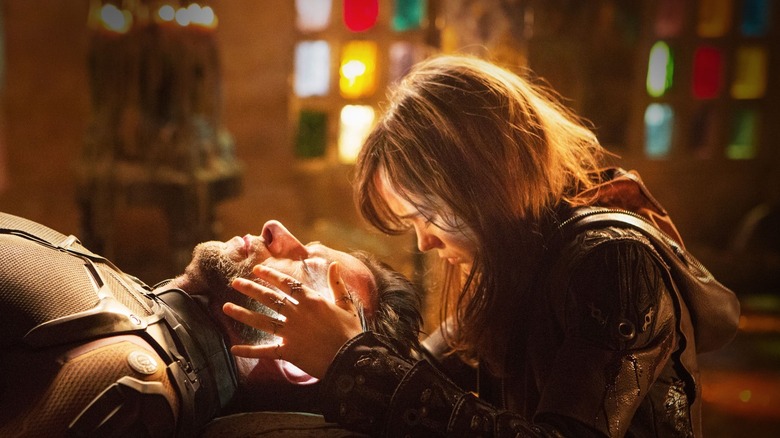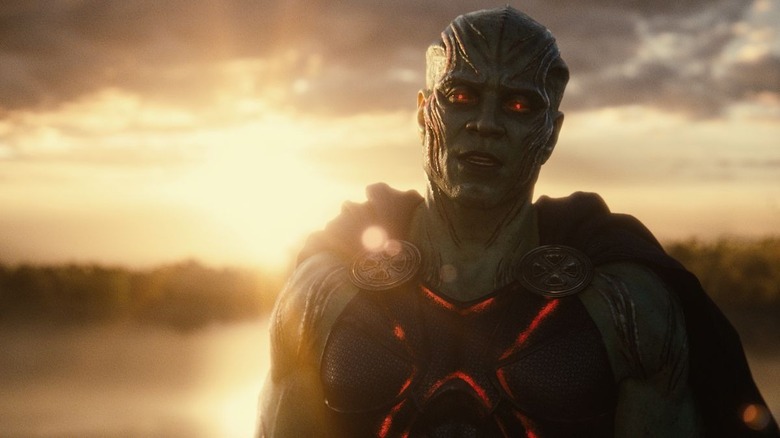Characters That Got Replaced In Superhero Movies And TV Shows
Have you ever watched a superhero story on the big or small screen and wondered why your favorite character didn't show up? With budgets getting bigger and effects technology allowing filmmakers to achieve anything they can dream up, there doesn't seem to be any reason why a sprawling epic can't feature every character that appeared on the page.
The truth, however, is that turning superhero stories into lavish, big-budget movies and TV shows is much more complicated than ever before. No matter how many tools filmmakers have at their disposal, movies will always see a flurry of changes from the page to the screen. Along the way, some of your favorite heroes and villains can get left behind — swapped out when an actor isn't available, or because it's just one too many characters risking to gum up the story.
Whatever the reason, it's happening more and more these days. In fact, looking back on past projects, you might be surprised by some of the heroes and villains who nearly appeared in your favorite superhero movies and TV shows, but were replaced before hitting the screen.
Balder and Iron Man in Doctor Strange in the Multiverse of Madness
One of the most exciting parts of "Doctor Strange in the Multiverse of Madness" was the potential to revisit old Marvel movie and TV universes. This occurs in the form of the Illuminati, a group of heroes assembled to watch over the multiverse. The team includes the surprising returns of Anson Mount as Black Bolt and Patrick Stewart as Professor X, plus "The Office" star John Krasinski as Mr. Fantastic, Lashana Lynch as Captain Marvel, and Hayley Atwell as Captain Carter.
These cameos came as a shock to many fans, but the team almost featured a very different roster. It would have included a variant of Iron Man — looking a lot more like the villain Iron Monger — and a previously unseen Asgardian hero, Balder the Brave, who would have been played by James Bond star Daniel Craig. This was confirmed by storyboards from concept artist Soren Bendt that showed both heroes heading into battle against the Scarlet Witch. Additional behind-the-scenes footage showcased by Insider shows more of what this sequence could have looked like, with Wanda apparently impaling Balder with his own blade.
Why the pair of heroes was replaced at the 11th hour has never been directly addressed, though rumors that Craig couldn't make it to the U.S. to film his part due to Covid restrictions could have been a factor.
Alan Scott's Green Lantern in Legends of Tomorrow
Since 2012, the so-called "Arrowverse" has helped introduce audiences to some of the more obscure heroes in the DC universe, including Mr. Terrific, Firestorm, and Black Lightning. But one lesser-known character to get the spotlight almost didn't make it into the series, only getting a chance when a bigger hero was nixed by the studio.
Introduced as a member of the Justice Society in an episode of the spin-off series "Legends of Tomorrow," the golden-age hero known as Hourman wasn't the first choice to lead the super-team. In fact, as originally envisioned, the team would have been helmed by Alan Scott, the original Green Lantern, as revealed by concept artist Andy Poon on his Instagram. As Poon states, he was initially told to design a new look for the green-ringed hero, only to discover after about an hour of work that producers had been told that Alan Scott could not be used. Hourman was chosen as a fill-in.
Hourman is played by actor Patrick J. Adams, first appearing in the Season 1 episode "Legendary." Adams reprised the role for one more episode, the aptly titled "Justice Society of America" in Season 2, while the character of Alan Scott has yet to make his live-action debut.
The Human Torch in The New Fantastic Four
When Marvel launched the animated series "The New Fantastic Four" in 1978, one member of the team was conspicuously absent: the flame-wielding hero called the Human Torch. In his place was a strange little robot called H.E.R.B.I.E. For decades, urban legend held that the reason the Human Torch had been replaced was that the network feared children would be inspired to set themselves on fire.
The true story is much more mundane, however, and was revealed by noted comic book historian Mark Evanier on his blog (and confirmed by Marvel). "In 1977, Marvel made a deal that licensed a number of their characters to Universal Studios to be developed as live-action TV-movies and potential series," Evanier explained. "The Human Torch was one of the characters that Universal wanted to develop, and a teleplay was written but never produced." Because the Human Torch was being considered for a live-action project, the rights to the character were tied up, forcing the TV series to swap out one of the founding members of the team.
Still, his replacement H.E.R.B.I.E. was dreamed up by Stan Lee himself and designed by Jack Kirby. He even entered the comic book continuity in 1979, making a number of appearances over the years and becoming a fan favorite himself.
Deadshot in The Suicide Squad
When writer/director James Gunn was briefly canned by Disney in 2018, Warner Bros. quickly snapped up the filmmaker and signed him to craft a sequel to David Ayer's "Suicide Squad." While that film had landed to a poor response from critics and audiences, Gunn still wanted to bring over several key pieces, which wound up including Margot Robbie as Harley Quinn and Viola Davis as Amanda Waller. A mostly new cast was led by Idris Elba as Bloodsport, who might seem strangely similar to Deadshot, played by Will Smith in the first film.
Flash back to March of 2019, and a report from Deadline claimed that Elba was being eyed not for Bloodsport, but as a replacement for Smith as Deadshot. Sure enough, storyboards created during pre-production by concept artist David Levy suggest that Deadshot was indeed originally intended to be in Gunn's film. Whether or not Elba was ever considered to play Deadshot has never been confirmed officially, but all involved seem happy that he wound up playing a new character, including the actor himself.
"I'm really satisfied that James [Gunn] didn't want to do that. I didn't want to do that. Deadshot is a great character and Will slays it," Elba told Entertainment Tonight in 2021. By making him a new character, Gunn also left the door open for Smith to return to his old role, though the reshuffling of the DCU under Gunn's stewardship has now left that even more uncertain.
Blue Beetle in Arrow
In "Arrow," actor Brandon Routh — who once starred in "Superman Returns" — pops up in the role of Ray Palmer, AKA the Atom, DC's shrinking superhero. But the series makes a few alterations to the character from his comic book origins, positioning him as the CEO of the technology firm that takes over Queen Consolidated and giving him a suit of armor that provides his powers. Fans may have suspected that Palmer was being turned into a copy of Iron Man, but the truth is a little more complicated.
Producers had initially hoped Ted Kord, AKA the Blue Beetle, would be the man to take over Oliver Queen's company, not Ray Palmer. Several earlier episodes even made allusions to Kord's presence. But when the time came, the studio balked and told them the character was off-limits. This all came to light when producer Andrew Kreisberg talked about the swap during an appearance at San Diego Comic-Con. "We actually originally asked for Ted Kord," Kreisberg said (via IGN). "But DC has other plans for him, so they said, 'How about Ray Palmer?' And we said that would work even better."
In the end, the Atom stood in for Blue Beetle and wound up becoming a major character in the series. Eventually, he even led his own spin-off, "Legends of Tomorrow."
Mysterio in Spider-Man: No Way Home
When trailers began to drop for "Spider-Man: No Way Home," it became clear that the movie would be filled with a variety of villains pulled from previous films. This included Willem Dafoe as the Green Goblin, Alfred Molina as Doctor Octopus, Jamie Foxx as Electro, Thomas Haden Church as Sandman, and Rhys Ifans as Lizard. Astute fans noticed that the roster of baddies was just one shy of the number needed to form the wall-crawler's iconic group of foes, the Sinister Six, and many suspected that Jake Gyllenhaal might return as Mysterio to complete the team.
Alas, when the movie was released, Mysterio was nowhere to be seen, but he was apparently very close to joining the party. Concept and storyboard artist Phil Langone took to Instagram more than a year after the film's premiere to showcase a scene that had been drafted up featuring the bowl-headed baddie. Langone noted that at one point during the storyboarding process, it was actually Mysterio who was responsible for the death of Aunt May, in a sequence taking place on an elevated train.
In the end, the role of Aunt May's killer fell to Green Goblin, which may have been for the best as it added extra weight to the character's journey.
The Flash in Smallville
Today it might not seem so strange to see Superman and the Flash rubbing elbows in live-action. We've seen both heroes team up in Zack Snyder's "Justice League" — played by Henry Cavill and Ezra Miller — and in episodes of The CW's "The Flash," played by Tyler Hoechlin and Grant Gustin. But back in the early 2000s, when "Smallville" was the hottest superhero TV show on the tube, the closest fans ever came was Clark Kent fighting villains alongside the hoodie-wearing speedster Bart Allen, also known as Impulse.
"Smallville," of course, is the origin story of Superman, in which Tom Welling plays a young Clark Kent as he slowly discovers his superpowers. Most of the show's superhero guests are similar origin stories for the likes of Green Arrow, Aquaman, and Cyborg. Welling told TVLine in 2021 that due to a ban from studio executives, who were working on a big-screen franchise for Batman, Bruce Wayne wasn't allowed to appear, though he was vaguely alluded to. Sadly, The Flash was rejected for similar reasons when producers wanted an appearance from Barry Allen, as confirmed by series creator Al Gough in a 2004 interview with KryptonSite.
In his place, the show was allowed only to use the younger spin-off hero known as Impulse. Though he became a mainstay in the series as a recurring character, the irony is that during its run, The Flash proper never actually turned up on the big screen.
Tony Stark in Black Widow
Scarlett Johansson's Black Widow finally got her own movie in 2021, but because her character was already dead, the events of the film actually take place earlier in the MCU timeline. As a result, an early scene is required to establish for the audience exactly when the film takes place. It's a fun chase sequence, but one that almost didn't need to happen according to the film's writer, Eric Pearson.
Appearing on ComicBook.com's Phase Zero Podcast, Pearson talked about a very early edition of the script that actually included a scene with Tony Stark instead. "One version of the script prior to me literally had written into it 'The end moment of 'Civil War' with Tony and Natasha,' but it was old footage," Pearson said. "It would have been 'Hey audience, remember where we are, we're going to key off of this moment of her.' So it wouldn't have been Robert Downey Jr, at least to the best of my knowledge, that was the only time that I saw Tony Stark's name in was just a flag planted reminder of 'Hey we're right at the end of 'Civil War.'"
In the end, Pearson chose to discard the Stark cameo. In its place came the aforementioned scene featuring Thunderbolt Ross to help clue movie-goers in on the timeline.
The Thing and the Fantastic Four in Deadpool 2
"Deadpool" rocked the movie industry when it was released in 2016, setting the box office record for an R-rated film and proving that audiences were craving darker, more violent superhero movies. Given its success, it was something of a surprise that director Tim Miller didn't return to helm the sequel, "Deadpool 2," replaced by "Atomic Blonde" director David Leitch. But what fans didn't know when they went to see it at the time was that when Miller left the project, several potential cameos went out the door with him, including the Thing. The classic hero would have had a showdown with the mutant villain Juggernaut, with the rest of the Fantastic Four also popping up.
Once again, word about this scrapped cameo came courtesy of a concept artist on Instagram — Alexander Lozano. Lozano shared images of the entire team, based on actors Miles Teller, Kate Mara, and Michael B. Jordan, who'd played the team in the 2015 reboot. According to the artist, Miller had specific instructions on how to portray the group, looking to give fans a more faithful representation than they'd ever gotten on-screen.
Ultimately, Leitch ditched the Fantastic Four cameos and replaced the Thing with Colossus in his duel with the Juggernaut. While the Fantastic Four were scrapped, we did get a blink-and-miss-it cameo from the X-Men instead.
Carol Danvers in Jessica Jones
"Jessica Jones" debuted on Netflix in 2015, starring Krysten Ritter as the super-powered private detective. Season 2 introduces Jessica's adoptive sister Trish Walker, played by Rachael Taylor, who proves a capable fighter herself and eventually becomes a vigilante. At one point, Trish even dons an outfit reminiscent of her superhero alter-ego in the comics, Hellcat. Some fans were surprised by the inclusion of the "Defenders" character, but if you thought including Hellcat in the series was unexpected, wait until you hear that her role was originally meant to be filled by Carol Danvers, AKA Captain Marvel.
Showrunner Melissa Rosenberg divulged this tidbit while talking about the rocky road that "Jessica Jones" faced, from when it was first planned as a network series for ABC in 2010 to its premiere on Netflix half a decade later. "Back when it was at ABC Network, I did use Carol Danvers," Rosenberg told IGN in 2018. Unfortunately for the producers of the series, the MCU exploded while their show was languishing in development. The feature film team decided that Danvers and her Captain Marvel persona were better suited for the big screen, rather than serving as a supporting character to Jessica Jones.
"As it turned out, Patsy Walker ended up being an incredibly—a much more appropriate fit with Jessica," Rosenberg told IGN. "It was better that her best friend was not someone with powers. It actually ends up being a really great mirror for her."
Rachel Summers in X-Men: Days of Future Past
"X-Men: Days of Future Past" was released in 2014, uniting the cast of the previous generation of "X-Men" films with the cast of 2011's "First Class." The story sees phasing mutant Kitty Pryde (Elliot Page) helping Wolverine (Hugh Jackman) send his consciousness back in time to change history with the help of a younger group of X-Men. But wait — since when did Kitty Pryde have mental time travel powers? Well, the truth is that an earlier version of the script had telepathic mutant Rachel Summers — daughter of Cyclops and Jean Grey — sending the hero's mind back into his younger body, but she was subbed out for Kitty for the sake of simplifying the story.
"It was Rachel that sent Wolverine back in the first draft of my script," writer Simon Kinberg told The Q&A Podcast after the movie's release (via ComicBook.com). "I had Storm having this kind of complicated relationship with her because she's the orphan of Jean, who's Storm's friend, who's dead, and Scott, who was Storm's friend, who's dead. And more than anything — and this is a movie I had to do this a lot on — I had to do a hypertext introduction to a character." Ultimately, Kinberg said that including Rachel "just seemed more complicated than it was worth for a movie that already had a lot of drama and a lot of complication." Instead, he gave Kitty the ability and explained it as one of her "Secondary powers" — a concept from the "X-Men" comics.
Green Lantern in Justice League
For years, director Zack Snyder insisted that he had a nearly-completed cut of his "Justice League" film ready to be delivered, with only some special effects needed to complete it. So when Warner Bros. announced that the infamous "Snyder Cut" would finally be released, it seemed safe to assume that the final product would be the director's original, unaltered vision.
But this turned out not to be the case, and Snyder used the tens of millions of dollars in the additional budget to not just finish incomplete FX shots, but to film some entirely new sequences. What audiences may not have realized at the time was that some of these additions were the result of studio interference, with Warner Bros. requesting that Snyder not include a planned appearance from a major DC superhero. "We shot a version of this scene with Green Lantern, but the studio really fought me and said, 'We really don't want you to do Green Lantern,'" Snyder told Vanity Fair in 2021. "So I made a deal with them, and they let me do this [instead]."
"This," of course, was a conclusion with the alien hero Martian Manhunter replacing Green Lantern, in a newly-shot scene using motion capture of actor Harry Lennix. The change unfortunately left actor Wayne T. Carr — who'd filmed an alternate version of the scene as John Stewart — on the cutting room floor.
